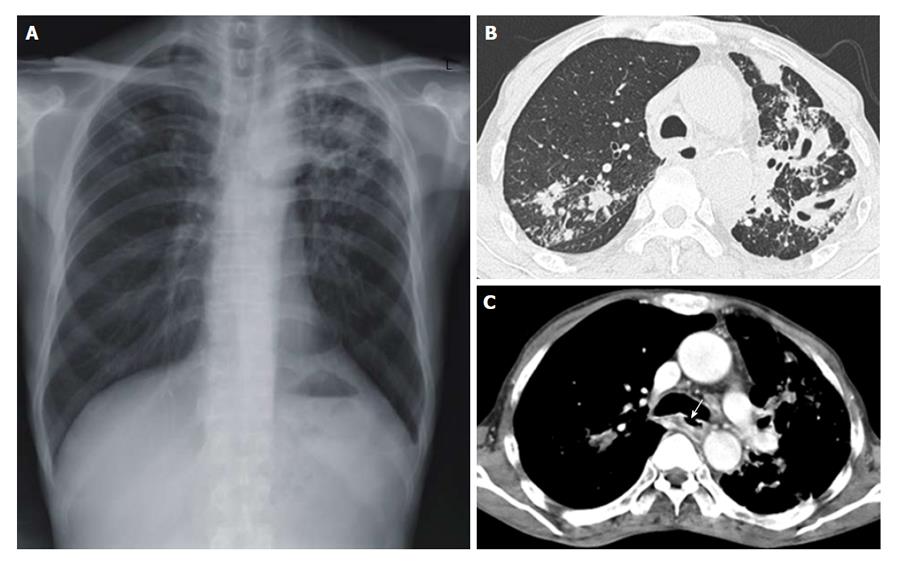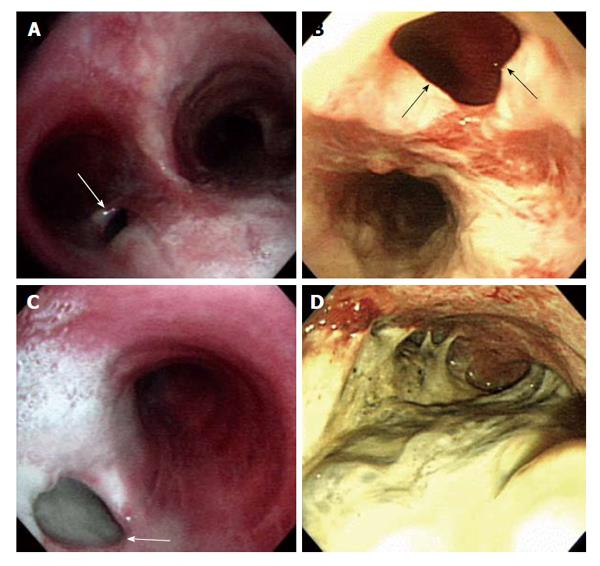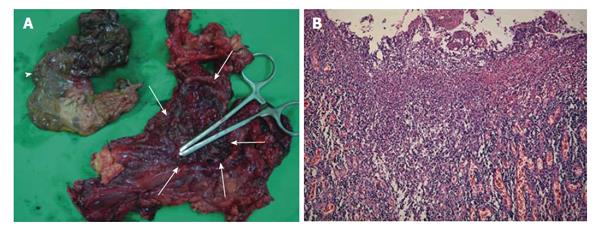Copyright
©2014 Baishideng Publishing Group Inc.
World J Gastrointest Surg. Dec 27, 2014; 6(12): 253-258
Published online Dec 27, 2014. doi: 10.4240/wjgs.v6.i12.253
Published online Dec 27, 2014. doi: 10.4240/wjgs.v6.i12.253
Figure 1 Chest radiograph and chest computed tomography scans are suggested reactivated pulmonary tuberculosis.
A: Chest radiograph revealing combined reticulonodular densities, air space and nodular consolidation in the both upper lobe of the lung; B: Chest computed tomography showing multiple cavities with centrilobular nodules in the left upper lobe of the lung; C: A 1 cm sized bronchoesophageal fistula (white arrow) was observed in the inferior wall aspect of the left main bronchus.
Figure 2 Bronchoscopy (A and C) and esophagogastroduodenoscopy (B and D) show tuberculous bronchoesophageal fistula and nearby lesions.
A: A 1.0 cm × 1.5 cm sized hole (white arrow) was seen at the inferior wall aspect of the left main bronchus; B: Esophagogastroduodenoscopy showing a large fistula (black arrows) was noted at the level of incisor 28 cm below; C: The lumen of fistula (white arrow) was filled up with whitish exudate secretion and materials; D: Edematous and hyperemic inflammatory mucosal changes with exudate materials were observed at whole stomach.
Figure 3 Gross anatomic specimen and its macroscopic histology show severe tuberculous inflammation and necrosis from the totally resected stomach and a part of duodenum.
A: A huge defect (white arrows) in the gastric wall along the midbody and fundus. The dirty ragged tissue (white arrowhead) which was covering the defect was identified to be the infracted gastric wall pathologically; B: Histologic findings of the resected specimen in hematoxylin and eosin staining (original magnification × 100) showing diffuse transmural inflammation with extensive multiple ulcers on the stomach.
- Citation: Park CS, Seo KW, Park CR, Nah YW, Suh JH. Case of bronchoesophageal fistula with gastric perforation due to multidrug-resistant tuberculosis. World J Gastrointest Surg 2014; 6(12): 253-258
- URL: https://www.wjgnet.com/1948-9366/full/v6/i12/253.htm
- DOI: https://dx.doi.org/10.4240/wjgs.v6.i12.253











